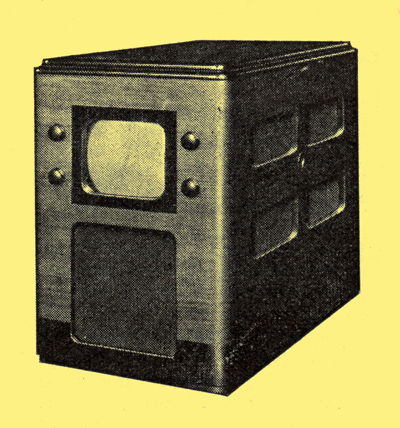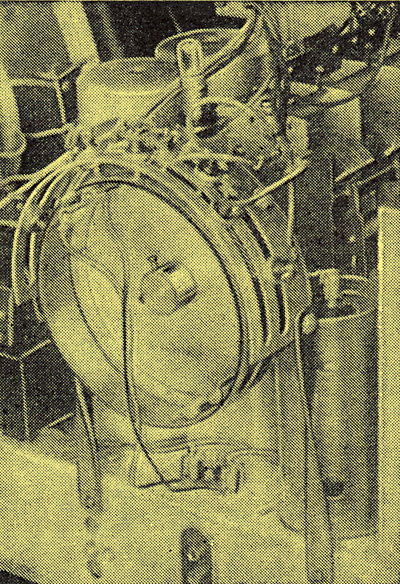|
The days were long past when the vagaries of short-wave propagation had been stoically accepted as something to be endured, like the weather. Diversity reception was now well established; a description of the BBC's highly developed receiving station at Tatsfield was published. And the minor deficiencies of equipment generally were less readily tolerated. Now came a determined effort to overcome tuning drift by more basic and cheaper means than automatic frequency control; much attention was given to temperature compensated components.
The public demand for television receivers had so far been disappointing. Now, in an attempt to attract buyers, cheap sets with small 5-in, 6-in or 7-in tubes were introduced. One example, costing 29gns, had a 5-in tube giving a picture 4.75-in by 4in.

Cossor model 54 with 6 inch tube (1938)
Push-button tuning became the vogue in sound broadcast receivers.
There were three main methods: mechanical location of the condenser; motor drive of the condenser; separate pre-tuned circuits for each station.

Drum type commutator of the HMV motor-driven tuning mechanism (1938)
In brief: electronic techniques used for neurological research and Grey Walter's electro-encephalograph produced; improved electron microscope announced; 'wobbulator' and Cossor double-beam oscilloscope introduced.
|